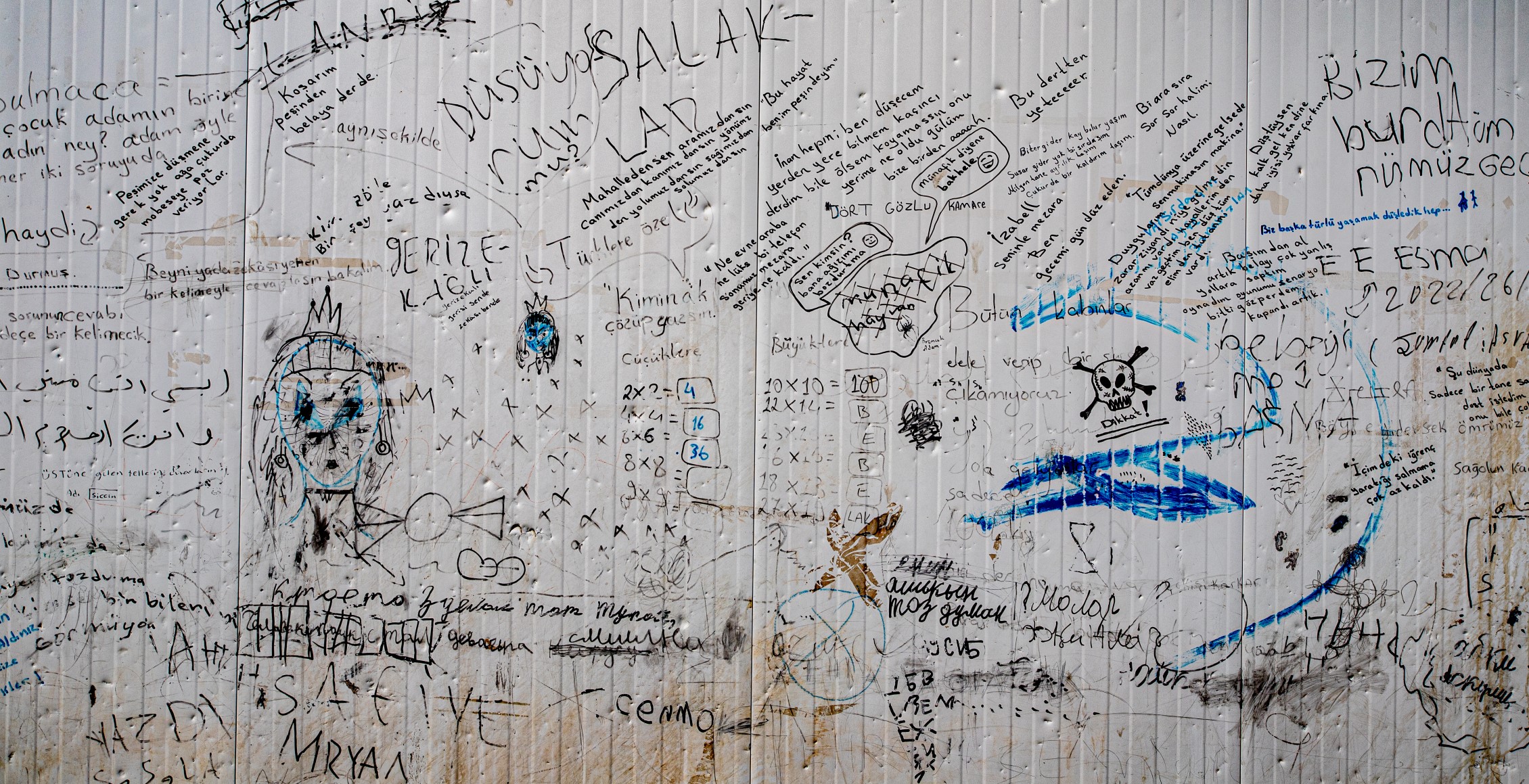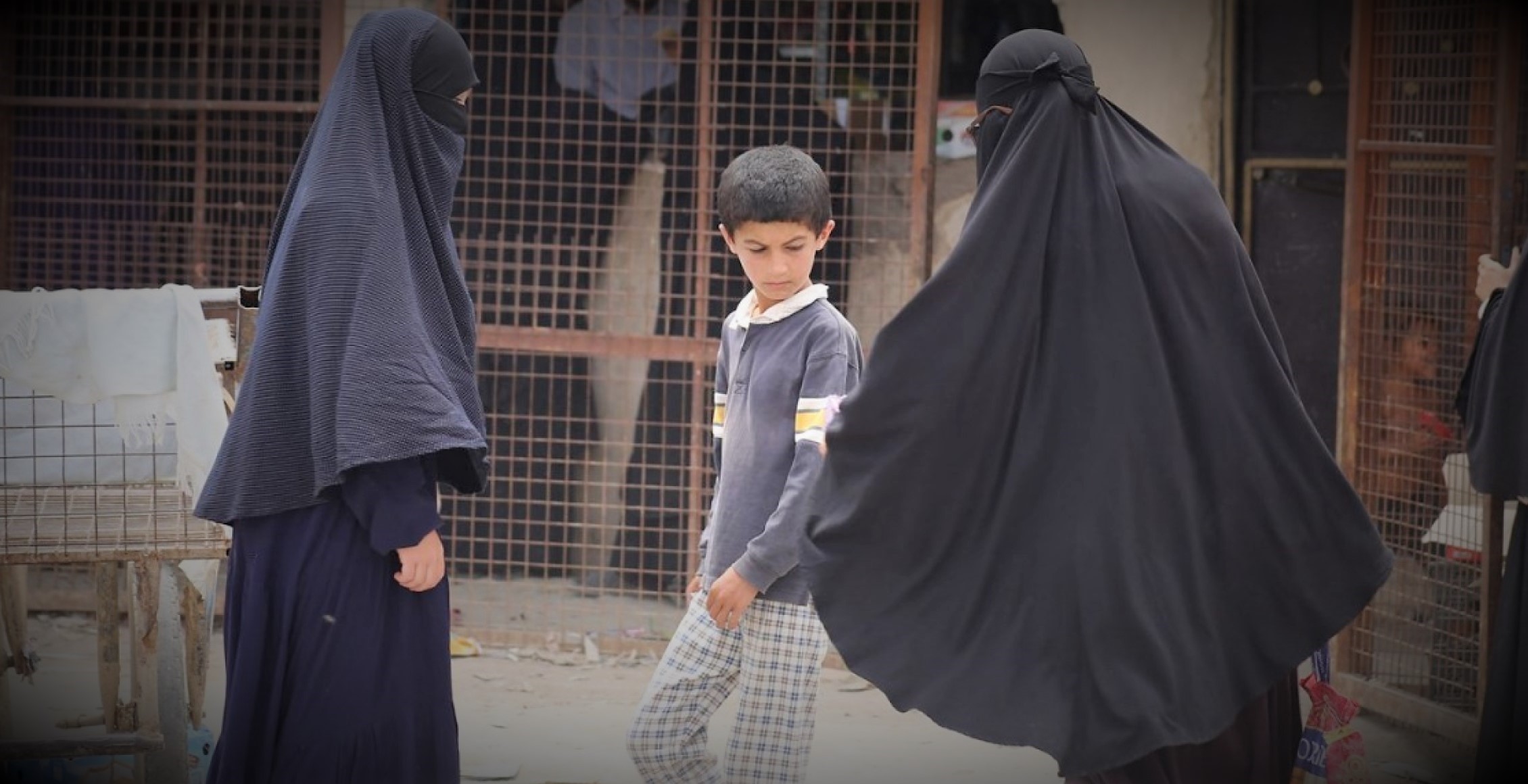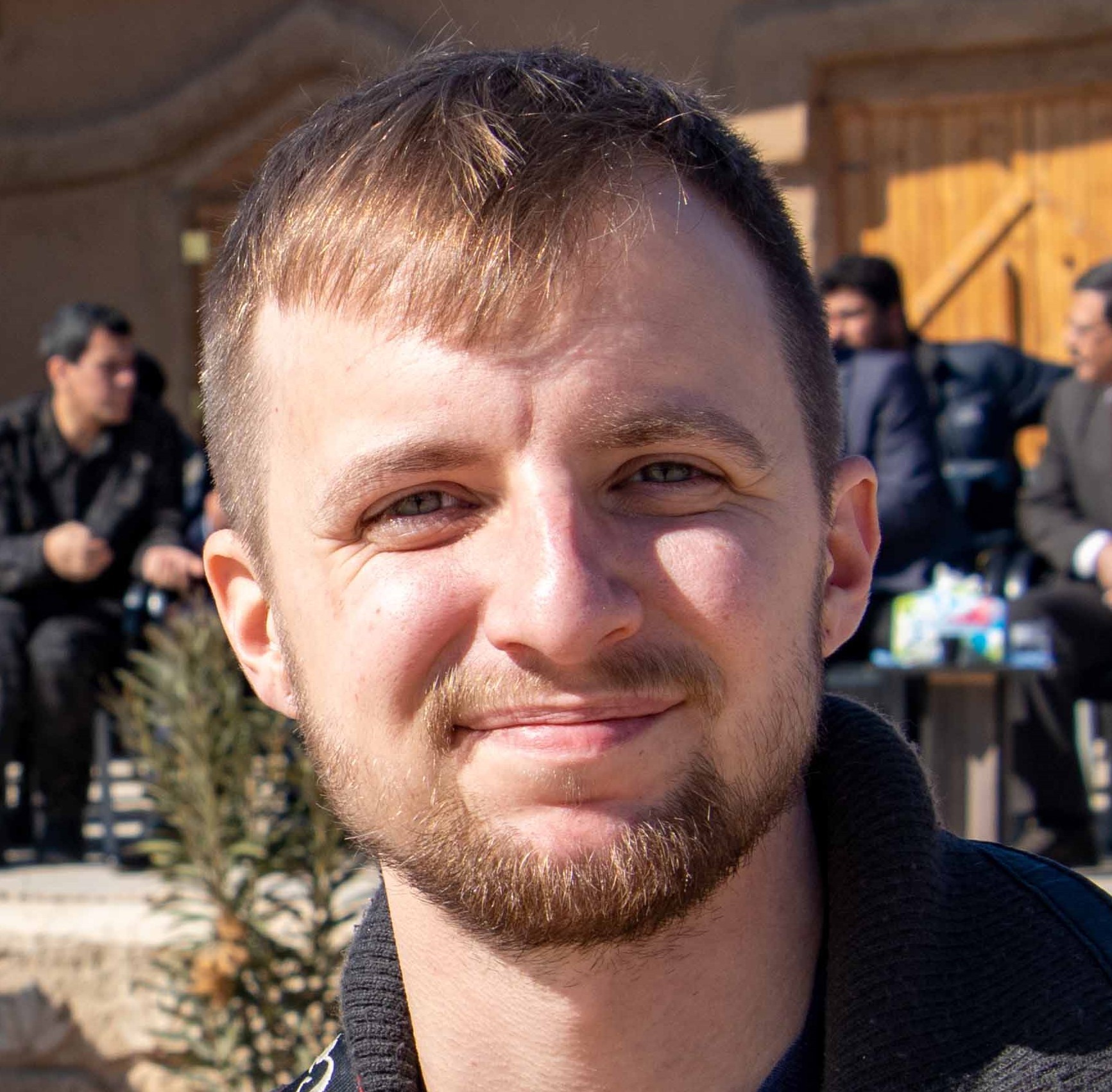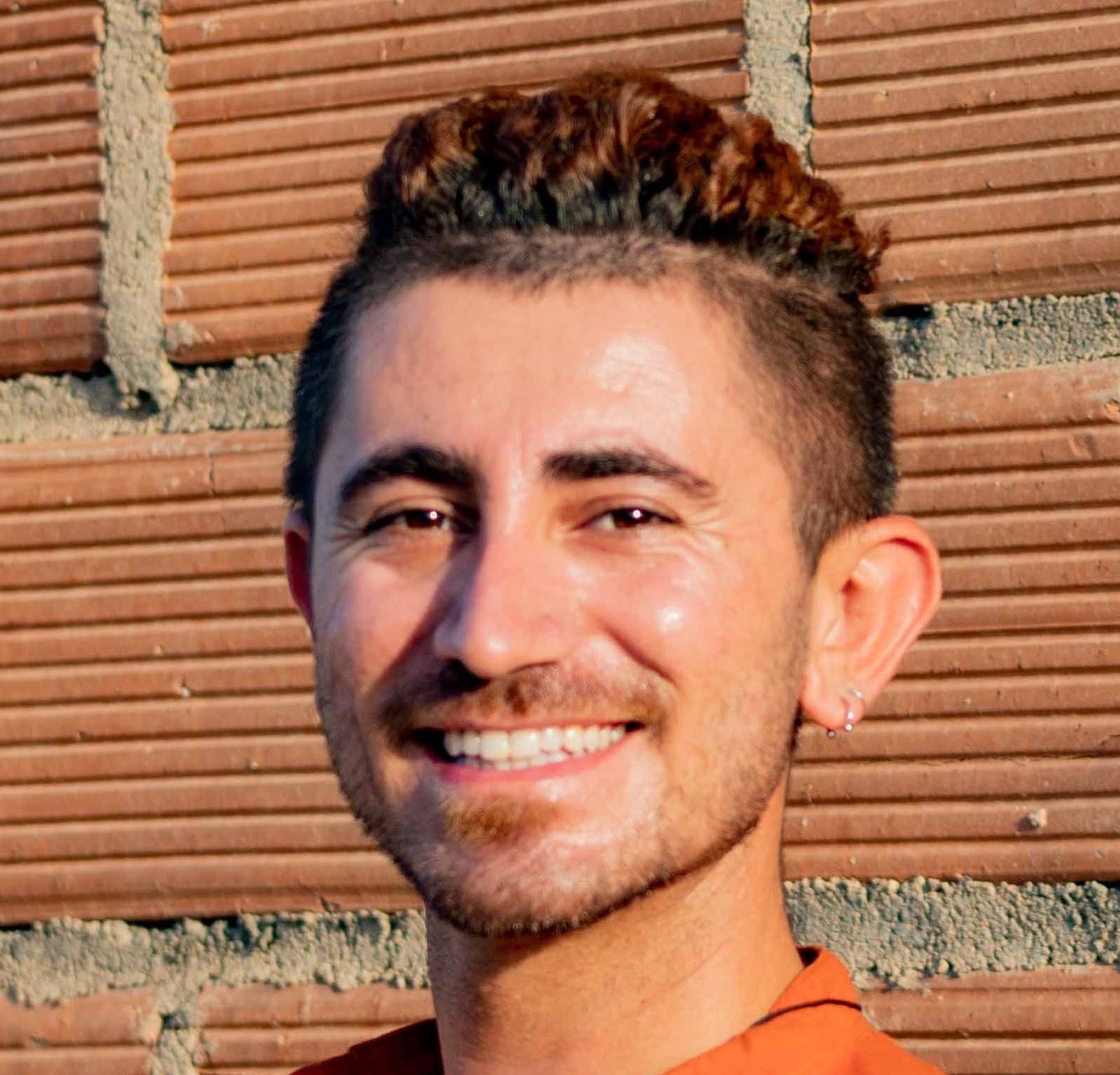On February 16th, 2023, the United Nations Office of the High Commissioner for Human Rights issued a press release expressing “grave concern” about reports that the male children of ISIS fighters, some as young as 12, had recently been removed from the Roj Camp in Rojava (northeast Syria), 13 kms from Derik. In the wake of this press release, dozens of foreign media outlets, including The Guardian and Arab News repeated the report’s talking points, namely that 10 boys from Roj Camp were taken to “men’s prisons.” However, further investigation by The Kurdish Center for Studies (KCS) reveals that while the Autonomous Administration of North and East Syria (AANES) did indeed remove these boys from the camps, there was justification and the real story is much more complicated.
Roj Camp is one of two detention camps in which are home to the wives, widows, and children of ISIS fighters, the other being al-Hol Camp. Al-Hol, which was initially established by Iraqi refugees fleeing the Gulf War and US invasion of Iraq in the early 1990s and 2003 respectively, is now home to over 55,000 individuals, including more than 8,000 foreign ISIS wives and children from 56 countries.
For its part, the smaller Roj Camp contains two sections: one sector for displaced Iraqis, and the other for foreign wives and children of ISIS members. It is one of several camps which house ISIS women and their children after the territorial defeat of ISIS at Baghouz in 2019. The camp’s foreigners’ section houses over 800 families from more than 60 different countries, or around 2,800 individuals.
Terror in the Camps
When KCS researchers visited the Roj Camp, foreign ISIS women repeated the claims that their children had been “snatched” from them in the middle of the night without warning, and that they do not know where their children are or how they are doing. Both allegations which our investigation later showed to be false. Upon hearing of the accusations – that also appeared in the aforementioned reports for Western media – the administration of Roj Camp were taken aback. Rashid Omar, an administrator of the Roj Camp Civil Council, explained their side of the story to the KCS, stating:
“We were shocked. We didn’t understand the report. We see that these reports are inappropriate. The NGOs are working in the camp, and they themselves complain about the situation of children. It’s true that we remove boys over the age of 12. They don’t go to school here; their mothers train them in the tents. When their training is finished, in the evening, they wear women’s clothes and patrol the camp. They train dogs to attack NGO workers; the NGOs themselves have asked us for help with these kids.”
Omar added that removal of teenage boys from Roj Camp aims to separate them from insidious sources of ISIS ideology. While many women who publicly spoke to KCS in the camp claimed that ISIS ideology no longer persists there, private testimonies from individual women, camp administration, Internal Security Forces, and personal observations by KCS researchers demonstrates otherwise. One 22-year-old Iraqi woman, who had been brought to Syria by her family at age 11, told KCS that while she did not wear the hijab for years while in the camp, she recently began to wear one two months ago, out of fear that she would be attacked or killed by other women. Omar spoke of this pervasive fear, recounting how:
“It’s reached a level where the women are afraid of each other, and of each other’s children. They complain that the children will hit each other or try and set fires to other women’s tents. They patrol the market looking for women who don’t wear the niqab. We banned the niqab in the camp, but after this, the children would go around and threaten any women who weren’t wearing it.”
As KCS researchers made a tour of the camp alongside security forces, a group of young boys followed the group and attempted to order their two dogs to attack them. In describing how these children terrorize the camp in groups, Omar described the situation at the camp’s park, recalling:
“There is a park in the camp; it is run by the NGOs. Some of the women who have managed to slowly change and make progress over time – for example, by removing the black veil, removing the veil altogether, or smoking cigarettes – will sometimes hang out in this park. But when these children that have received training from their mothers in the tents come to the park, not one of these women remains. The park’s guard also works for an NGO. They have even threatened him. The children have said to this guard, ‘if you complain to the administration about us, we will cut your head off.’ They also frequently graffiti these areas with ISIS slogans, such as ‘remaining and expanding,’ ‘we will not spare you,’ ‘you are infidels,’ and most recently, ‘revenge is near.’”

Administration officials, local and international media, non-governmental organizations (NGOs), and camp residents have for years raised the alarm regarding constant violence and proliferation of terrorist ideology in the camps. In June 2022, The Guardian reported that over 100 people had been murdered in 18 months in al-Hol camp. While an extensive video report by Al-Hadath at the beginning of March this year showed images of young women and girls chained up in their tents, as well as cleavers, axes, and other edged weapons confiscated by security forces.
Qamishli-based journalist and researcher Lamar Arkandi told Al-Hadath that a few months prior to the territorial defeat of ISIS, an ISIS commander issued a fatwah ordering women to have more children. Many women were pregnant when they entered the camps after 2019, and post-2019, yet another fatwah was issued ordering women to reproduce within the camp.
The video report also revealed the devious nature of the hizba, or Islamic religious police, within the camp. The women of the hizba punish women who are thought to have strayed from ISIS ideology with beatings, being chained up, having their tents burned, or executions. These radical women in al-Hol Camp also hide adolescent boys and young men within tunnels and bring Iraqi and Syrian men from the camp’s other sections, in order to become impregnated and have more children.
Removal & Rehabilitation
Administrator Rashid Omar explained that far from a midnight raid, the women in the camp with teenage boys were informed that their boys would be removed well in advance, stating: “When we removed the last 10 boys, we saw that some mothers had brought their sons who were under 12 to be taken to the center as well; we actually returned these boys to their mothers because they are still too young.” Besides attempting to remove children from an environment saturated with a dangerous and violent ideology, removing teenage boys from the camp aims to save them and others in the camp from a darker fate – one of sexual abuse and exploitation.
Multiple members of the camp administration recalled an incident soon after the camp’s founding in which a 14-year-old French boy snuck into the tent of a 20-year-old Syrian woman and sexually assaulted her, an assault which resulted in pregnancy. Other women in the camp worry about themselves and their own teenage daughters, because, as Omar stated, “You don’t know who is going into which tent because the boys will don women’s clothes and sneak into different tents. There have been pregnancies and the women have told us that the fathers are these young boys.”
While the UN report describes the separation of these boys from their mothers as “unlawful,” the Children’s Law No.7 of 2022 of the AANES General Council mandates that children be protected from dangerous environments. Moreover, Article 2 states that children have the “right to life and to live in a safe environment,” and that authorities have a duty to protect children “from all manifestations of neglect and exploitation, bad treatment, and any physical or psychological violence.”
The AANES’ Article 9 adds that deliberately exposing children “to any harmful physical abuse or harmful or illegal practice” is expressly forbidden. Children who suffer abuse or severe neglect at the hands of their parents anywhere in Rojava or northeast Syria may be taken from their parents and placed with other family members – as is the situation in most countries with systems in place to protect children from familial abuse and neglect. “We saw this whole situation as a problem and knew we had to do something about it. Because of this, the two centers were created,” Omar said. Similarly, the Kurdish YPJ Commander Nujin Derik spoke of the risks posed by the boys if they were not removed, outlining how:
“They do target practice using swords and sharp objects, train in judo, and conceal themselves with chadors and niqabs. Their mothers are brainwashing them. We therefore have rules to separate the boys when they turn 12 or so or if they are acting violently. There were several beheadings at the camp. We have no other choice.”

Boys over the age of 12 from Roj and al-Hol are taken either to the Houri Center or Orkesh Center in the Jazira region. The ten boys mentioned in the UN report were taken to the Orkesh Center. The Orkesh facility currently houses approximately 100 boys from aged 12 to 18, with most boys being between 14 and 16, according to the facility’s administrators. The boys are all foreign (no Syrian or Iraqi boys are in the center) and come from 20 different countries. Boys are allowed bi-weekly calls with their mothers, and mothers can send money or clothing to their children. Purity, a local NGO, provides educational classes in English and Arabic, as well as art classes and sporting equipment.
Housing is divided into six dormitories with bunkbeds sleeping around 18 boys per dormitory, with each dormitory having separate toilets and shower facilities. The facility houses a sports field for soccer games, and a large new bathroom and shower facility is under construction. Orkesh administrators admit that their capabilities and resources are limited; while there is a full-time nurse on staff, a doctor only visits once a week and the boys do experience health problems such as dental issues, asthma, and mental health issues. While describing the dilemma, an Administrator at Orkesh Center told KCS:
“Some of the children did not commit any crimes, but many were trained militarily and many were sexually abused. Some of them even told us that they had fathered children in the camps. This is a problem we will have to deal with in the future. So far, children who have turned 18 have stayed at Houri Center. They cannot re-enter society. We gave the UN a list of names for repatriation, but so far only three or four kids have been repatriated from our center.”
The Repatriation Solution
The UN report, the officials who run the camps and centers for these boys, and even many former ISIS wives themselves, however, agree on one thing – that repatriation is the only clear solution. Relatedly, last month, UN chief Antonio Guterres called for the swift repatriation of the 50,000+ foreigners held in the al-Hol camp, nearly half of them children.
Foreign countries are capable of repatriation from Rojava and northeast Syria, and some have already moved to return their citizens. In 2022, 13 countries repatriated 515 foreign nationals from these camps. In the first four months of 2023 alone, Barbados, Spain, Kyrgyzstan, Canada, Norway, and Sudan repatriated 101 individuals, or 29 women and 72 children, from the AANES. Orkesh Center administrators told KCS that three boys have been repatriated from their facility. However, these repatriations are a drop in the bucket compared to the number of foreign nationals still in all of the camps, and countries – particularly those with large numbers of their nationals in the camps – must act urgently to remove such children from Rojava and Syria.
It cannot be the responsibility of the Kurds in Rojava or the AANES to house, feed, and guard these ISIS children in perpetuity, only because the national governments from which they came are fearful of repatriating them, or politicians in those countries want to avoid the bad press of bringing back ISIS elements into their society. But the forces of the YPG (People’s Protection Units), YPJ (Women’s Protection Units), and SDF (Syrian Democratic Forces) have already made enough sacrifices for the international community by defeating ISIS and keeping them from regrouping, the least the other nations of the world could do is take back the children of the ISIS fighters which derived from their countries.
The burden on the AANES & Kurdish forces is even stronger when you consider that Turkey is continually threatening to invade the region, and repeatedly has bombed the perimeters of these camps, with the hope of helping the prisoners break free and threaten Rojava. In December 2022, Gihan, one of the camp management staff, spoke of the deliberate nature of these attacks, theorizing:
“The missiles did not hit the inside of the camp but the perimeter where the camp guards were. And this was no mistake. The target was our military. By attacking the guards they gave some people a chance to escape, just as happened in the Hasakah camp, also during a Turkish air raid. In this case the escapees were caught almost immediately. By letting potential terrorists escape, Turkey thinks it can destabilize our government from within.”
Consequently, an international plan must be developed, that involves both stopping the external attacks on Rojava from Turkey and taking these children back to their home nations where they can receive the adequate resources related to their mental health and rehabilitation. This cannot be a situation where the children of ISIS – some who were born in these camps – are expected to live out their entire lives inside tents in the desert of the nation their parents sought to terrorize. Such a result will not only create a new embittered and organized generation of ISIS that one day may endanger the world, but it also places massive stress on the AANES which are trying to rebuild their society after years of war, continued invasions, blockades, and turmoil. ISIS was a global problem, and despite their noble and heroic efforts up to this point, the Kurdish forces of Rojava cannot continually be seen as the only solution.





Comments are closed.